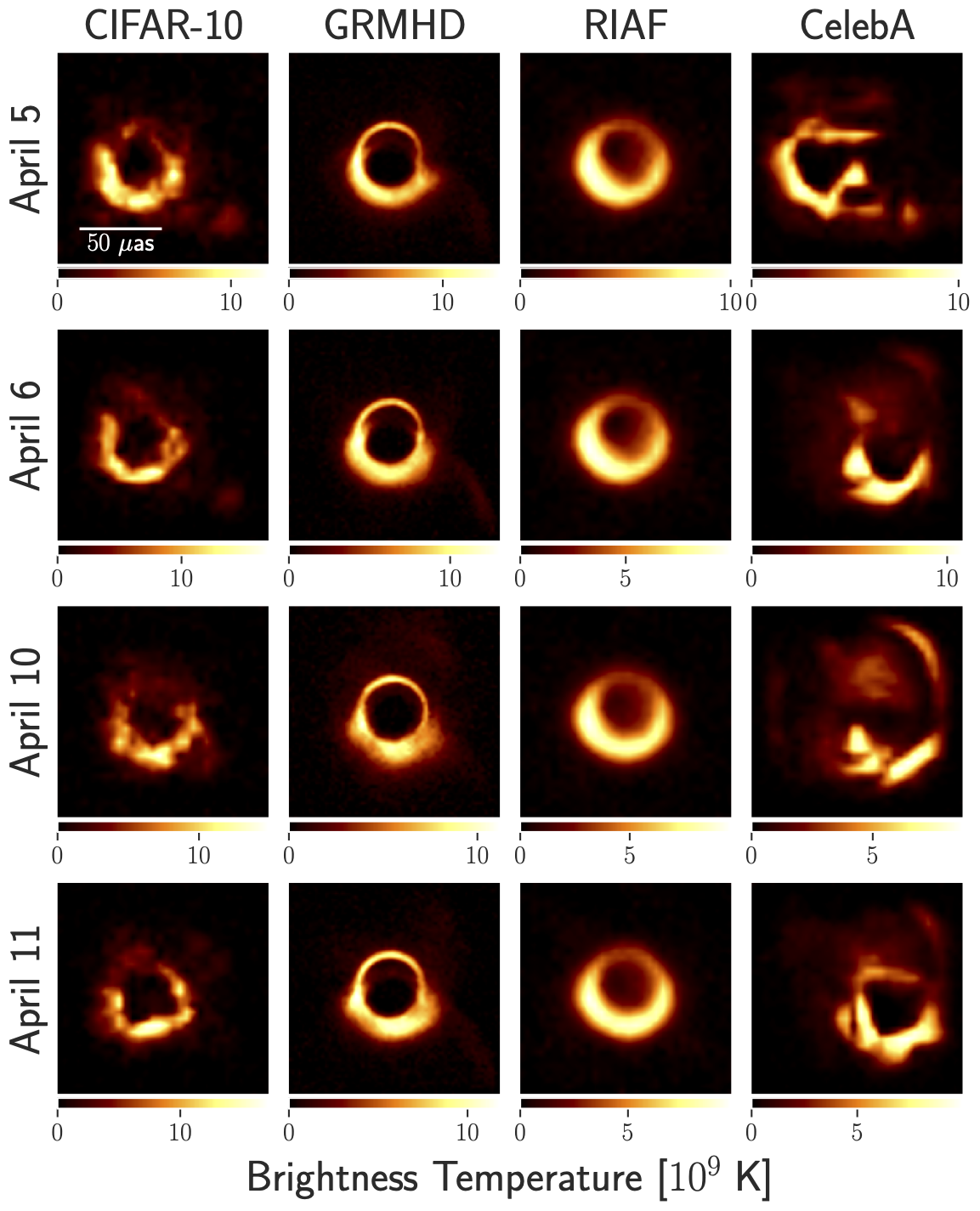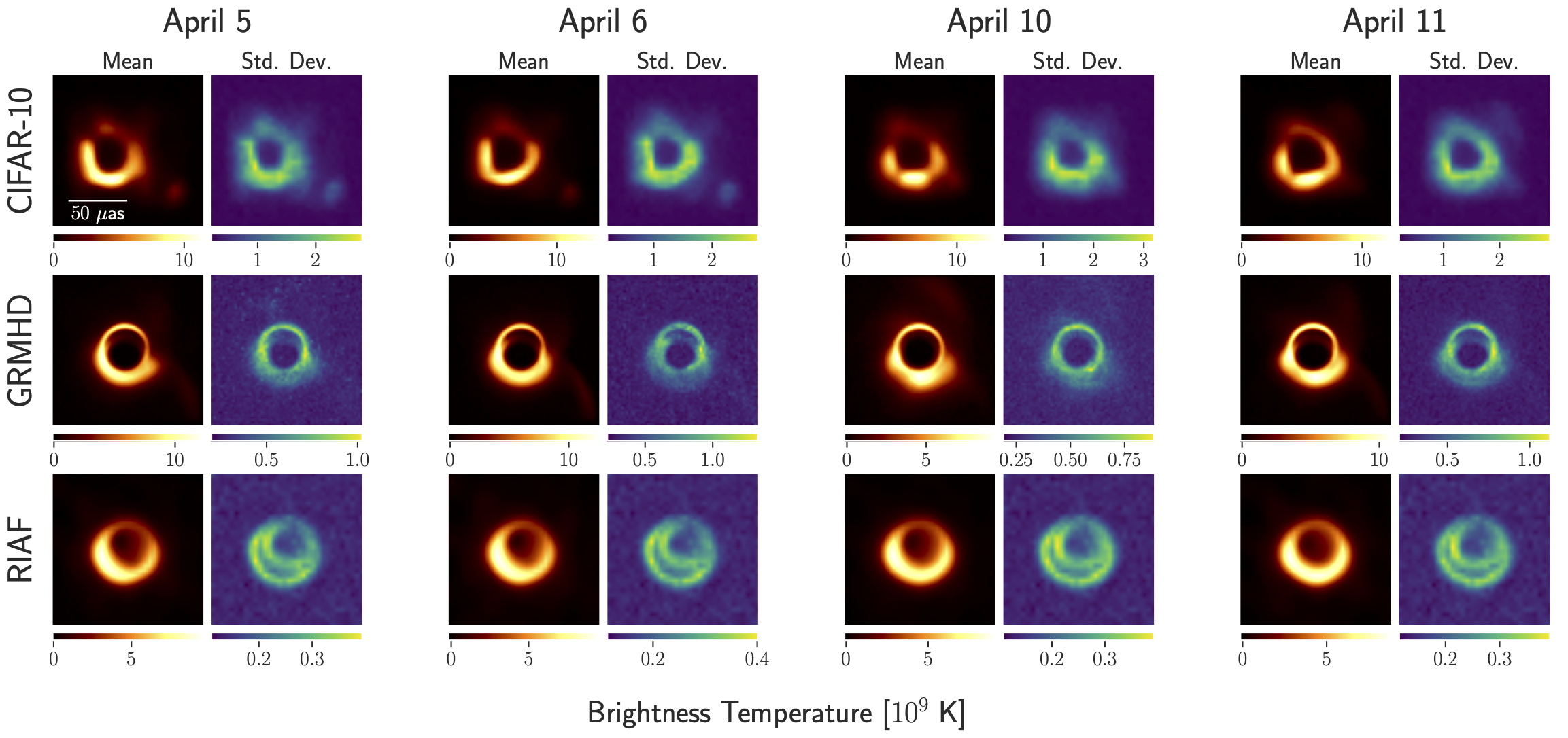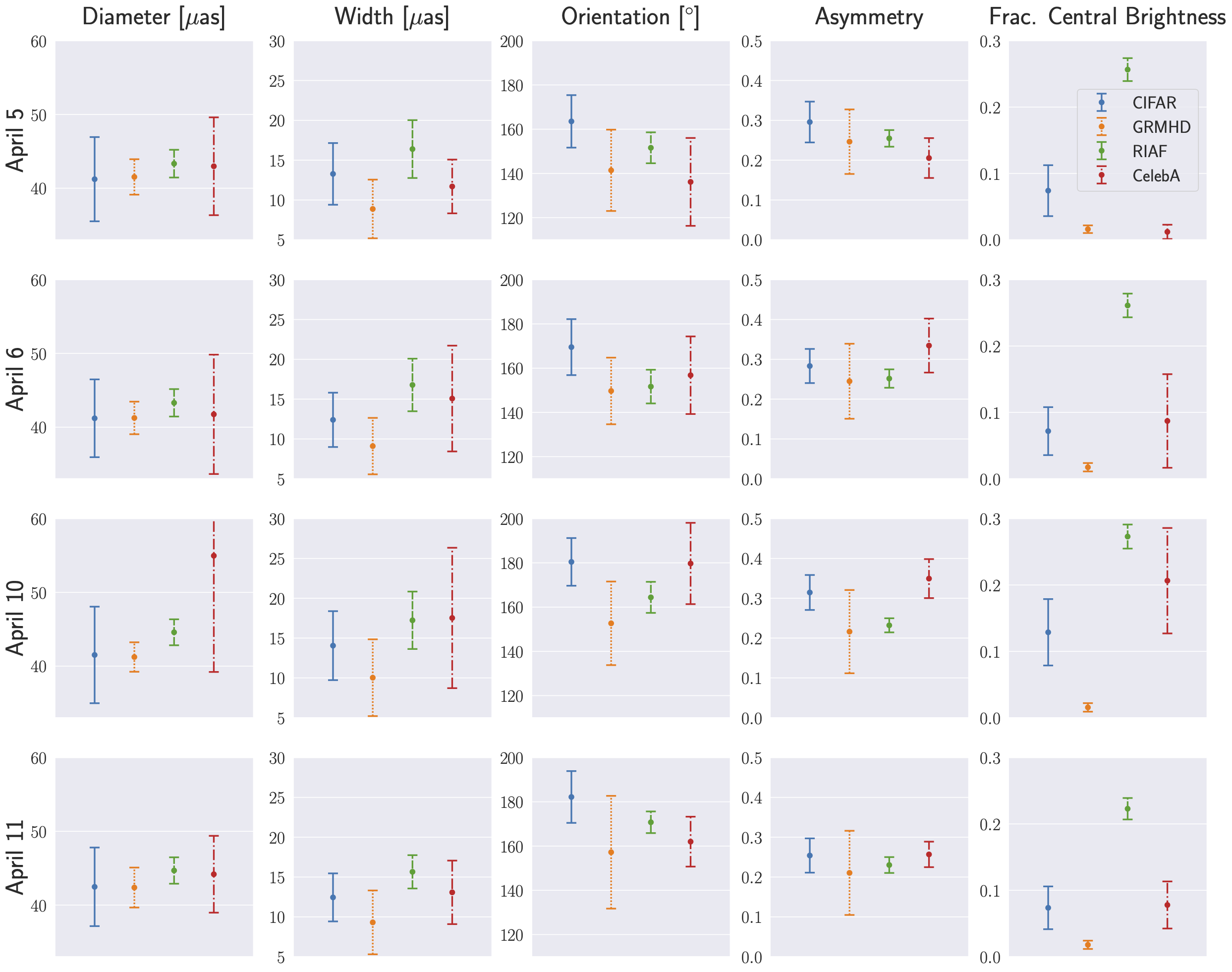Event-horizon-scale Imaging of M87* under Different Assumptions via Deep Generative Image Priors
1California Institute of Technology 2Google Research 3MIT
Abstract
Reconstructing images from the Event Horizon Telescope (EHT) observations of M87*, the supermassive black hole at the center of the galaxy M87, depends on a prior to impose desired image statistics. However, given the impossibility of directly observing black holes, there is no clear choice for a prior. We present a framework for flexibly designing a range of priors, each bringing different biases to the image reconstruction. These priors can be weak (e.g., impose only basic natural-image statistics) or strong (e.g., impose assumptions of black-hole structure). Our framework uses Bayesian inference with score-based priors, which are data-driven priors arising from a deep generative model that can learn complicated image distributions. Using our Bayesian imaging approach with sophisticated data-driven priors, we can assess how visual features and uncertainty of reconstructed images change depending on the prior. In addition to simulated data, we image the real EHT M87* data and discuss how recovered features are influenced by the choice of prior.
Method
We use a Bayesian imaging approach to sample from an image posterior given EHT measurements and a desired image prior. Specifically, we use variational inference to approximate the posterior with a RealNVP normalizing flow. The prior is a deep generative image prior known as a score-based prior, which is pre-trained on a dataset of images with the target statistics.

Figure 1. Method illustration. (a) illustrates our particular variational distribution: a RealNVP, which is optimized to generate images as samples from an approximate posterior. The measurement log-likelihood and log-density under the score-based prior are computed for samples from the RealNVP throughout optimization. (b) zooms into the score-based prior prior, which is based on a score-based diffusion model, a type of deep generative model. The exact log-probability or the evidence lower bound can be tractably computed for any image, even for out-of-distribution images and images of pure noise.

Figure 2. Score-based priors used in this work. Nine samples from each learned prior are shown. CIFAR-10 represents a generic natural-image prior (a tapering effect was applied to impose the assumption of a black background and centered object). The GRMHD prior was trained on detailed fluid-flow simulations of black holes. The RIAF prior was trained on a simplified geometric model of black holes. The CelebA prior was trained on images of human faces (the same tapering effect as that of CIFAR-10 was applied), representing a probably incorrect prior.
Results
We use our method to image the real EHT M87* data collected in April 2017. By using score-based priors to flexibly impose different image assumptions, we can analyze the effect of the prior on the visual quality and uncertainty of reconstructed images, as well as on the recovered ring features.

Figure 3. M87* posterior samples. A random posterior image is shown for each observation day and prior. The CIFAR-10 prior was trained on images of everyday objects and makes no assumptions of black-hole structure, yet it recovers a ring-like structure for all four observation days. The GRMHD prior assumes a fluid-flow model of black holes, which helps it recover visually-striking images of a thin ring with wisps. The RIAF prior assumes a simplified crescent model of black holes, which results in simplified crescent images of M87*. The CelebA prior was trained on images of human faces, so its preferred images are presumably far away from the true source image. Even with its incorrect and strong biases, the CelebA prior recovers a ring-like structure, here favoring an eye from the face prior to explain the ring. These images under various priors all fit the EHT observations but incorporate different visual biases.

Figure 4. Mean and std. dev. of posterior samples. Uncertainty decreases as the prior becomes stronger (i.e., maximum std. dev. decreases from CIFAR-10 to GRMHD to RIAF). Note that under the CIFAR-10 prior, the day with the most uncertainty is April 10, the day with the least data. The stronger priors (i.e., GRMHD and RIAF) do not exhibit more uncertainty for this day compared to other days.

Figure 5. Ring features extracted from M87* image reconstructions. The different priors (CIFAR, GRMHD, RIAF, CelebA) all agree on the diameter, orientation, and asymmetry up to error bars. There is some disagreement in asymmetry for April 10, which is the day with fewest observations. We note a slight upward trend in diameter and orientation angle over the observation days. The width and fractional central brightness change with the prior, with the GRMHD prior providing the thinnest rings and most brightness contrast. Image samples are shown in Figure 3.




